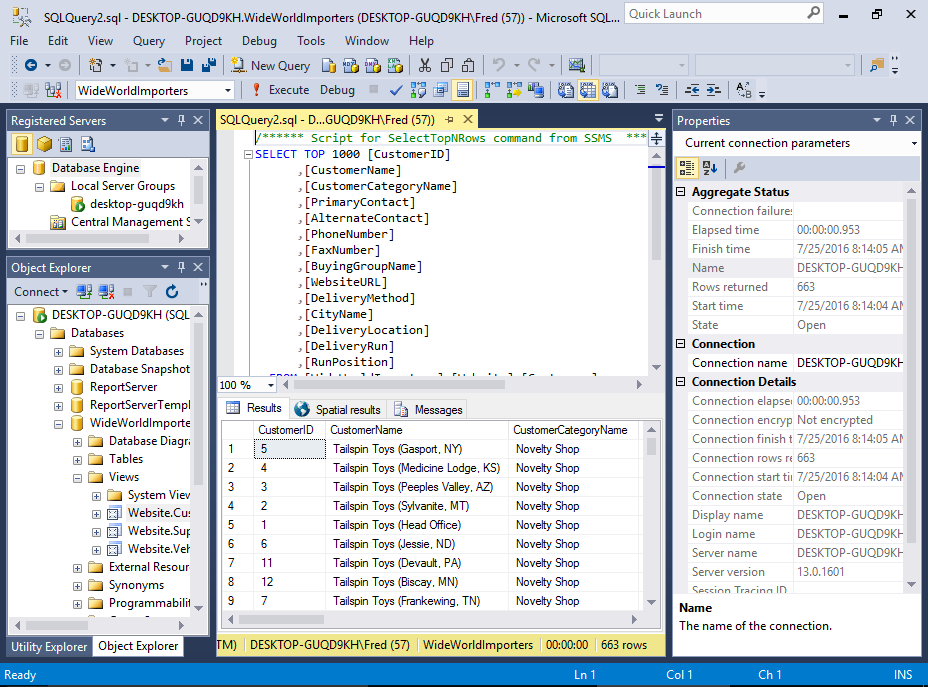SSMS is the most popular tool to manage SQL Server. It is an integrated environment designed to manage any SQL infrastructure, including SQL Server. SSMS provides a comprehensive utility that combines graphical tools with rich script editors, making it accessible for developers and database administrators of all skill levels. Key components of SSMS include:

- Object Explorer
- Object Explorer is a tree view of all the objects for a database or server. It includes databases of the SQL Server Database Engine, SQL Server Analysis Services, SQL Server Reporting Services, and SQL Server Integration Services. This view displays information for all servers to which there's a connection.
- Query and Text Editors
- The Query and Text Editors in SSMS allow you to interactively build and debug queries and scripts. You can enter your Transact-SQL (T-SQL) queries in the Query Window, and the results appear in the Results pane 1 .
- Template Explorer
- Template Explorer helps you build and manage files of boilerplate text to speed up the development of queries and scripts. It provides an extensive set of prebuilt T-SQL templates for various functions, such as creating or backing up a database.
- Visual Database Tools
- SSMS includes visual design tools to build queries, tables, and diagram databases. These tools provide a graphical interface for designing and managing database objects 1 . Managing Business Intelligence Solutions Analysis Services SSMS enables you to manage Analysis Services objects, such as performing backups and processing objects. You can develop and save scripts written in Multidimensional Expressions (MDX), Data Analysis Expressions (DAX), Data Mining Extensions (DMX), and XML for Analysis (XMLA) 1 . Integration Services SSMS can manage and monitor running SSIS packages. You can organize packages into folders, run, import, export, and upgrade Integration Services packages. The latest version of SSMS provides an integrated environment for managing the SSIS Catalog database 1 . Reporting Services SSMS enables Reporting Services features, administers the server and databases, and manages roles and jobs. You can manage shared schedules, report server databases, and various server features 1 .
|
“Always forgive your enemies; nothing annoys them so much.” — Oscar Wilde |